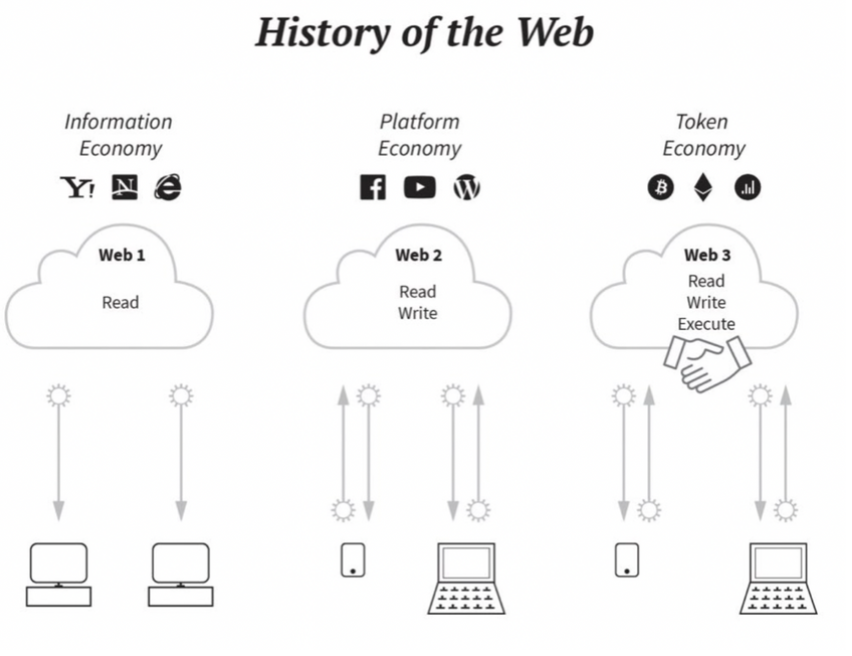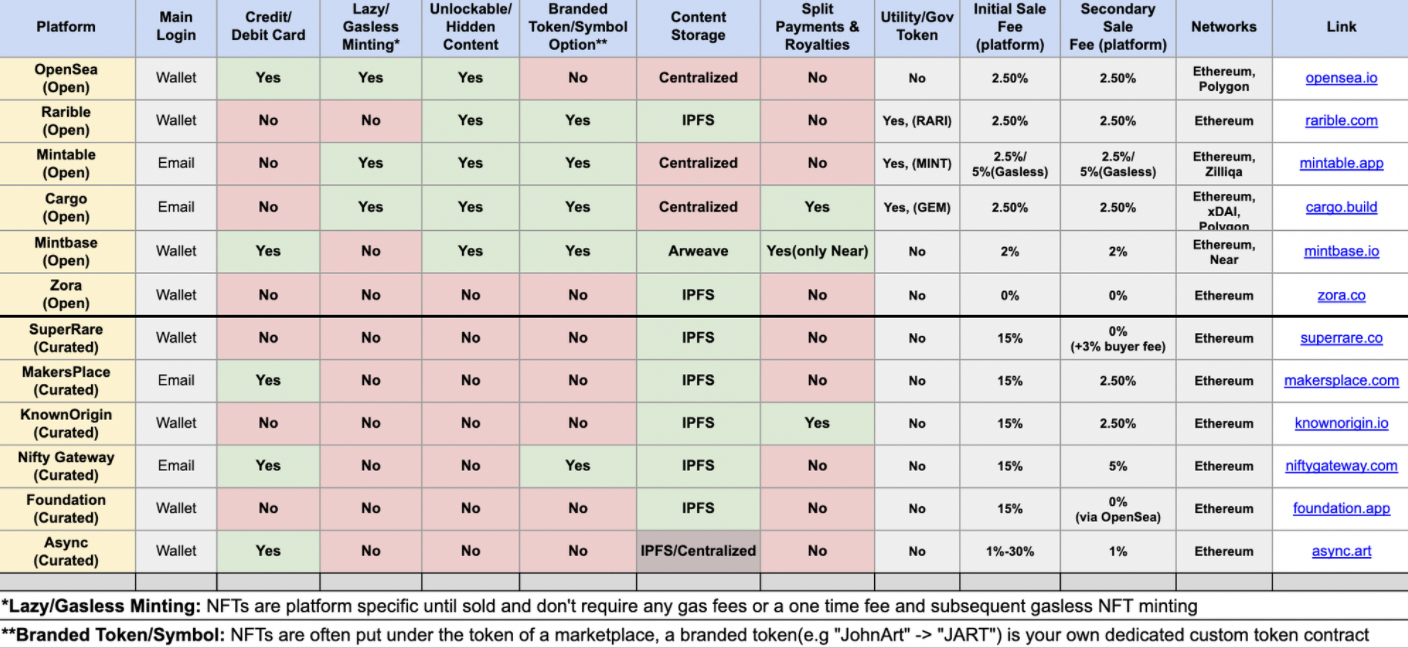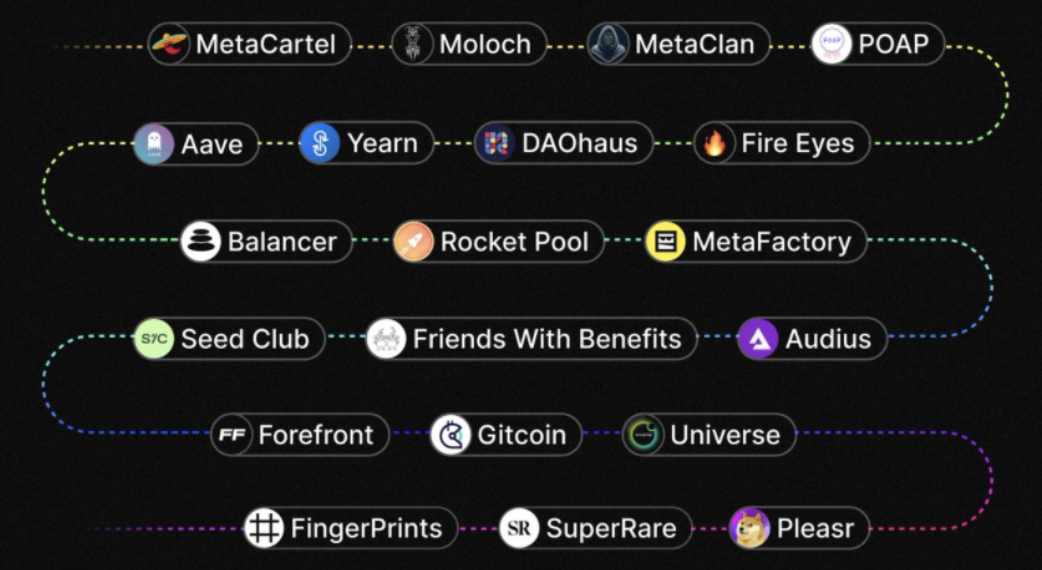HERE IS EVERYTHING YOU NEED TO KNOW TO GET STARTED IN WEB3.
Web 3 is a human project. The tech is just a means to an end.
People are not building Web 3 because they are excited about blockchains, infrastructure, or nodes. They work in it because they are excited about humanity. A profound shift in how technology may empower the individual and the collective - a revolution in ownership, in creativity, in how people organize.
WEB3.0 is the future of the internet.
Web 3.0 is the upcoming third generation of the internet where data will be interconnected in a decentralized way, which would be a huge leap forward to our current generation of the internet (Web 2.0), where data is mostly stored in centralized repositories with few companies owning all our data. eg. Facebook owns our data on Facebook but in a decentralized version of FB, your data will be on the blockchain that is open and transparent.
Also, Web3.0 is all about OWNERSHIP. In this iteration of the internet, WE as people own our data. Not monopoly huge tech giants like Facebook and Google.
This is AMAZING news for all of us because we are moving towards a more open, transparent yet secure future where the people and the community own all the data and therefore the company.
Glossary of Web3.0 Terms
- Web3 is a wide and vast term but when someone refers to Web3 they can mean anything including Crypto, NFTs, DAOs, Social Tokens, and the Metaverse.
- Cryptocurrency is a form of currency that is completely stored digitally and isn’t issued by a central authority such as Bitcoin.
- Blockchains - Bitcoin, Ethereum Solana, are all blockchains. Or more precisely, they are all computer programs that define how a set of computers can communicate/interact with each other in order to create a blockchain
- Wallets - You need a Wallet such as Metamask to make crypto transactions such as buying and selling NFTs. But you also need crypto in your wallet to buy/sell.
- Cryptocurrency Exchanges - So you can buy crypto such as Eth(Currency of Ethereum) from Coinbase which is an exchange and send it to your metamask wallet.
- Daps or Decentralized Apps - Then you can connect your wallet to a decentralized app or marketplace such as Opensea to buy and sell NFTs.
- NFTs - A simple way to think about NFTs are as files that live on the blockchain. NFTs make it possible to own digital media assets similar to how you can own a digital currency assets.
- Social Token - Social tokens are a type of cryptocurrency that a brand, community, or influencer can use to monetize themselves. Eg. Justin Bieber can have a $Bieber token.
- Metaverse - The metaverse is a digital reality that combines aspects of social media, online gaming, augmented reality (AR), virtual reality (VR), and cryptocurrencies to allow users to interact virtually.
- DAOs - A DAO (Decentralized Autonomous Organization) is like a Web3 Company. It is a new kind of digital and economic entity that runs as code and is owned and controlled by its members.
- Discord - Discord is a chat platform that plays a huge role in the organization and creation of Web3 communities.
LETS START 💪🏼 What is Web3?

Web1 (1980s - early 2000’s) The first phase of the Internet, Web1, was mainly about providing the everyday consumer with online content and information. When you think about Web1, think of Internet Explorer, Yahoo, or Netscape. While web1 was read-only, the companies we associate with web1 were built on open protocols (meaning pretty much any person or organization could build on the internet and know they were subject to the same rules as the next person or organization).
Web2 is the version of the internet most of us know and use today. Where Web1 was static and “read-only,” Web2 was “read-write,” and interactive. Under Web2, the internet became more usable: web2 was dynamic and users could consume, interact with, and create content on the internet themselves. Along the way, the internet became largely dominated by the four behemoths we know today as Apple, Amazon, Facebook, and Google.
What is the problem with Web2?
In the centralized internet we know today, Apple can take a 30% cut on all paid-app downloads and in-app purchases, Twitter and Facebook can de-platform the POTUS, and the everyday consumer has less privacy, security, and control over their online information than ever before.
Web3.0 came to the Rescue
Web3, the future internet we’re moving towards, is a decentralized internet. Under Web3, the internet is shared online and governed by the collective “we,” rather than owned by centralized entities. The Web3 world is one that has open-source protocols at its foundation. Web3 is about rearchitecting internet services and products so that they benefit people rather than entities.
What is Cryptocurrency?
A form of currency that is completely stored digitally and isn’t issued by a central authority. The most popular cryptocurrencies, by market capitalization, are Bitcoin, Ethereum, Bitcoin Cash, and Litecoin.
Start investing in cryptocurrencies from these Leading cryptocurrency exchanges: Coinbase, Binance, Gemini, BlockFi.
What is Blockchain?
Cryptocurrencies like Bitcoin and Ethereum are powered by a technology called the blockchain. At its most basic, A blockchain is a public database that is updated and shared across many computers in a network.
Different blockchains have different pros, cons, and communities. By volume, Ethereum is the most popular blockchain at the moment for NFTs, but other networks like Solana and Tezos are also favored by people who prefer lower fees and are mindful of the environmental costs of crypto.
What is Ethereum?
Unlike Bitcoin, Ethereum's goal is to become the world's decentralized computer (called EVM or the Ethereum Virtual Machine). The Ethereum blockchain allows developers to build and run a huge variety of applications: everything from games and advanced databases to complex decentralized financial instruments — meaning that they don’t require a bank or any other institution in the middle.
- Ether is Ethereum’s digital token. Ether is a store of value like Bitcoin, but its main purpose is to reward nodes on the Ethereum blockchain for processing transactions.
- Gas is the amount of Ether that's paid to a node to process a transaction.
- Smart contracts are code that runs on the Ethereum blockchain. This code is decentralized (stored across all nodes in the network), immutable (can’t be changed once committed to the blockchain), and open (anyone can view the code and use it).
- Decentralized apps (dapp) combine a backend smart contract with frontend UI. This has led to the creation of thousands of dapps that power web3 use cases such as:
- Buying and selling NFTs (OpenSea)
- Swapping tokens (Uniswap)
- Lending and borrowing tokens (Compound)
- Earning income from playing games (Axie Infinity)
What is a Wallet?
A crypto wallet is a piece of software or hardware that lets you make cryptocurrency transactions.
Best wallets for beginners: Metamask, Rainbow, Coinbase Wallet. Steps by step guide on setting up a Metamask Wallet can be found here.
When setting up a wallet remember about these two things -
- A public key links to an address that lets you send and receive transactions. Think of it as your email address.
- A private key proves that you own the tokens associated with your public address. Think of it as your email password. Since a private key is hard to remember (it’s a very long string of random numbers), wallets also give you a 12-24 word seed phrase. You shouldn't share your private key or seed phrase with anyone.
What is an NFT?
An NFT (non-fungible token) is a record of ownership of a digital asset.
The difference between fungible and non-fungible tokens:
- Fungible tokens are interchangeable (e.g., the US dollar, bitcoin).
- Non-fungible tokens (NFTs) are unique (e.g., art, music, domain names).
A simple way to think about NFTs are as files that live on the blockchain.
There are three ways to get an NFT: All three ways require you to have a crypto wallet first.
- Mint an NFT (mint = create an NFT for the first time). You can mint an NFT by creating it on a blockchain and becoming the NFT’s first owner.
- Buy an NFT on the secondary market. Popular NFT marketplaces include:
- OpenSea for Ethereum and Polygon NFTs.
- Solanart, Magic Eden, and SolSea for Solana NFTs.
- Foundation and Rarible for Ethereum 1/1 NFTs.
- Coinbase is also launching a marketplace soon.
- Get an NFT airdrop: You can get an NFT for free through an airdrop directly to your wallet’s public address.
Here is a comparison of the most common NFT Marketplaces -

Tools to help you find NFTs
- NFT Value Estimator - Experimental NFT appraisal tool from DappRadar
- rarity.studio - Generative art rarity rankings
- rarity.tools - NFT rarity rankings website
- NiftyRiver
- Upshot - Web3 platform for crowd-sourced NFT appraisals
Minting, buying, and selling NFTs require gas fees, which can be quite expensive on Ethereum.
What is gas fees?
is the amount of crypto that's paid to nodes on the blockchain to process a transaction. For Ethereum, gas is measured in gwei (1 gwei = 0.000000001 ether). You can visit What Is Ethereum? for a recap on how Ethereum works.
To mint an NFT, you can go with several routes -
- Easy mode: You can use an open NFT marketplace like Opensea, Rariable, Binance NFT, Zora, on invite-only sites like Foundation or Super easy to use platform like Quest NFT Platform. These sites have limited options for customizing your NFT’s contracts but are well catered for visual artists.
- Medium mode: Use open-source web frameworks like Metaplex to create your NFT drop. This removes the necessity of having to code as much because they are designed to make the process of creating and launching NFTs easier.
- Hard mode: Create your own contract in Solidity, Rust, or any other language and create your own mint website to have full power over it.
- Use our 💎 QUEST PLATFORM: We have created a Super Simple way for you to mint NFTs for free straight from your Instagram. You can check out the app here and here is a step by step tutorial on how you can use the Quest NFT Platform.
What is a DAO?
A DAO (Decentralized Autonomous Organization) is a mechanism that enables online communities to form and coordinate economically. It is a new kind of digital and economic entity that runs as code and is owned and controlled by its members. DAOs make it possible for an online group with members from anywhere in the world to pool capital and hard-code rules — entirely in software — for how that capital will be managed and deployed. Those rules are then enforced by the underlying blockchain.
Practically speaking, most DAOs use:
- Communication tools like Discord to stay in touch.
- Governance tools like Snapshot for members to vote on decisions (e.g., hiring someone).
- Asset management tools like Gnosis Safe to manage the DAO’s treasury.
Examples of DAOs include:
- Social DAOs to interact around similar interests. For example, Friends with Benefits is a private social club that builds products and offers IRL private events. To join, you need to hold 75 $FWB tokens.
- NFT DAOs to invest and own NFTs (non-fungible tokens) as a community. For example, Flamingo DAO bought an Alien Cryptopunk NFT for 605 eth (~$761K) in January 2021.
- Protocol DAOs to transition a project from a core team to community ownership. For example, Uniswap DAO issued UNI tokens to let its community vote on how to evolve the protocol.
- Commerce DAOs to let a community co-own a retail or ecommerce business through tokens. For example, E1337 DAO (pronounced elite) is a luxury apparel brand owned by 1337 token holders.
- Media DAOs to empower a community to produce content around a mission. For example, Forefront DAO produces content around social tokens.
Some cool DAOs to join -

What are Social Tokens?
Social tokens are a type of cryptocurrency that a brand, community, or influencer can use to monetise themselves beyond the typical means. Many influencers, celebrities, and businesses these days use social media or other media streams to monetise their skills or services.
Social tokens are of two types: personal or creator tokens and community tokens. These tokens are decentralised and secured by blockchain.
- Personal/creator tokens are created by individuals to exchange forms of labour. These individuals are usually public personalities like entrepreneurs or artists.
- Community tokens are created as a means to gain access to a community. These are similar to membership cards but based on the blockchain.
Several companies have mushroomed over the last couple of years to leverage the power of social tokens. Seed Club is an incubator for new social tokens. Fyooz operates a token marketplace. The Rally project enables token development and the launch and design of loyalty programmes. BitClout allows users to buy, trade or sell cryptocurrency based on the reputation of celebrities.
How are they different from NFTs?
NFTs are a part of the broad category of social tokens. The basic difference between social tokens and NFTs is the fungibility factor. NFT, as the name suggests is non-fungible and each of its unit is unique. Social tokens, on the other hand, are fungible. Each unit of a social token has the same value as another, just like a currency or cryptocurrencies such as bitcoin or ether. So, each bitcoin will be the same in value as the other and so it is easily interchangeable. In case of NFTs, however, one painting, for example, will not have the same value as another and it is not easily tradable. This makes them unique.
How do social tokens work?
A talented singer, comedian, or social media influencer can easily form a community of loyal followers. Here lies the opportunity for such content creators to launch their own social token where relevant content can be shared with their followers. Besides, celebrities can use social tokens as a gatekeeping mechanism by offering premium access to content only for their largest token holders.
What is the Metaverse?
It's a combination of multiple elements of technology, including virtual reality, augmented reality and video where users "live" within a digital universe. Supporters of the metaverse envision its users working, playing and staying connected with friends through everything from concerts and conferences to virtual trips around to the world.
The metaverse is essentially a merging of virtual, augmented, and physical reality, and blurs the line between your interactions online and in real life. But broken down more simply, it’s a handful of platforms like the Sandbox, Mirandus, and Decentraland on which people can interact in different ways. Interest in it has taken off ever since Mark Zuckerberg announced that Facebook would be changing its name to Meta, and spending at least $10 billion on the metaverse. And as more people begin to place their bets on a future embedded in the metaverse, businesses have already begun to start new ventures in this digital space.
How do I get started engaging with Web3?
- Start investing in cryptocurrencies - Leading cryptocurrency exchanges: Coinbase, Binance, Gemini, BlockFi
- Create an Ethereum wallet - Best wallets for beginners: Metamask, Rainbow, Coinbase Wallet
- Mint an NFT
- Follow your favorite creators, galleries on Twitter to find NFT’s and generative art that you’re interested in
- Mint your NFT from a Smart Contract on Etherscan (instructions here)
- Mint your own digital content as an NFT and list it on an NFT marketplaces
- Great twitter thread on how to create an NFT on OpenSea step-by-step
- Purchase an NFT - Explore the most popular NFT marketplaces: OpenSea, Foundation, Rarible.
- Yield farm - Yield farming is staking / lending your crypto assets to smart contract liquidity pools in exchange for returns (yield) in the form of crypto; returns are expressed in APY.
- Create an ENS domain - An ENS domain is pretty much your web3 username. It’s a name for all your cryptocurrency addresses, and decentralised websites. Instead of listing my full 42-character Ethereum address, I can use my ENS, jaydrainjr.eth (just like websites have domains instead of IP addresses).
- Join and contribute to a DAO
- Find a DAO that speaks to you, or one with people that you ~vibe~ with
- You may have to purchase membership through community tokens
- Participate in your DAO’s Discord server or Telegram chat
- Participate in governance votes
- Find a DAO that speaks to you, or one with people that you ~vibe~ with
To Dig Deeper find more info in our Content library here. To join a community to learn more, join our discord here.
List of Web3 Resources
- Epic list of resources
- Crypto
- Creators + Community
- Web3.0
- Ownership economy
- NFT
- Defi
- DAO
- Metaverse